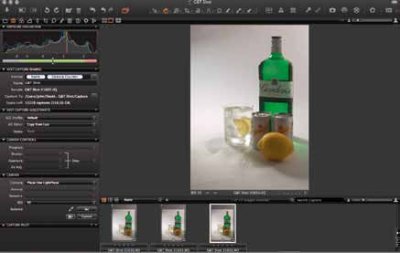articles/Business/ginandtonicmacrae-page3
Gin and Tonic for Mr MacRae please! - part 3 of 1 2 3 4 5
Published
Talk to the printer (that's the man who smells of solvents!). If you are supplying directly to the printer phone them up and ask how they would like the images preparing. Your questions should include the following:
1. The colour space required:
· RGB or CMYK?
· Which profile should you tag?
2. The resolution required (usually 300ppi but check)?
3. The sharpening requirements (which could be NONE!)
4. If text is involved additional precautions are required and some graphic design knowledge might be needed along with a pdf workflow - this is a separate discussion!
Set up your workflow In the absence of any countermanding instructions, you should set up Photoshop as shown in the screen grab. If you use other programs from the Creative Suite (InDesign, Illustrator or Acrobat) then you can set and synchronise the colour settings across the suite from within Bridge. See the screen grab - you start with Edit>Creative Suite Color Settings. When synchronised the 'settings icon' is a complete pie rather than one with a piece removed.

The reasoning behind the colour settings is worth explaining:
1. Adobe RGB is preferred for print work because the larger gamut handles the colours better (cyan in particular) than sRGB.
2. FOGRA 39 is preferred as the CMYK working spec for European presses. It has superseded FOGRA 27 which will be the default on older versions of Photoshop. PPA advice is to upgrade from 27 to 39. An alternative is an ISO profile usually called ISO Coated v2 (ECI). You may need to check with your printer, although either will produce a good result. In the USA and for much of Far Eastern printing (including China) the American SWOP standards may be preferred. Japan also have their own settings.
3. The Dot Gain is set at the European standard of 15% (it's 20% in the US) although the setting will only get you into trouble if your files get loose on an unmanaged colour workflow.
4. The Profile Mismatch - Ask When Opening is checked so that you have control against unexpected, tagged files getting loose in your system. If you do everything in-house and take no files from other people you could dispense with this setting (rather than have it squawking all the time if you have sRGB web files and CMYK files going through your system!)
5. If you are shooting RAW files then set your RAW file handling program to output files at 300ppi, tagged with Adobe RGB. Never send 16-bit files to press, they will more than likely stall the RIP. For the same reason do not compress TIFF files.
6. If you are shooting JPEG files in sRGB format you may want to consider your position. Although they are regularly used in Professional Imagemaker (that is what is used for digital competitions for example) the format is not ideal and should be avoided in quality commercial and press work.
7. Your completed file should be stripped of all layers (by flattening), all alpha channels and all paths before being saved for press work. Stray paths and channels can cause unexpected effects. A single path in a TIFF file may be used to cut out a subject. Files should be named with a file extension (eg .jpg or .tif ), otherwise they may be unrecognised by some operating systems. Also the file name should be meaningful - at Professional Imagemaker we have legions of adverts called swpp.pdf; how do the senders imagine we are to sort them out when we get 10 per issue all named the same way?
Please Note:
There is more than one page for this Article.
You are currently on page 3
- Gin and Tonic for Mr MacRae please! page 1
- Gin and Tonic for Mr MacRae please! page 2
- Gin and Tonic for Mr MacRae please! page 3
- Gin and Tonic for Mr MacRae please! page 4
- Gin and Tonic for Mr MacRae please! page 5
1st Published
last update 09/12/2022 14:54:44
More Business Articles
There are 14 days to get ready for The Society of Photographers Convention and Trade Show at The Novotel London West, Hammersmith ...
which starts on Wednesday 14th January 2026




